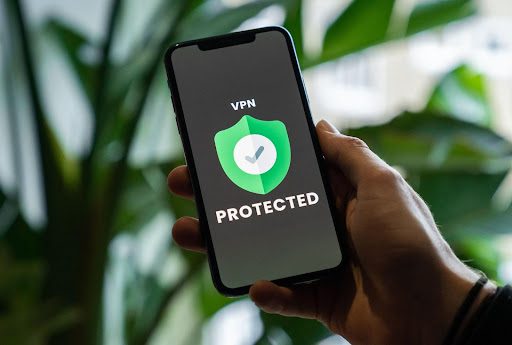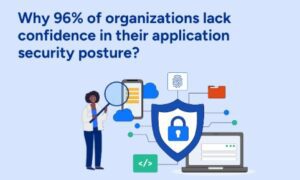Cyber attacks have continued to increase and are expected to grow to 15.4 million by 2023. As per the 2020 Verizon report, 86% of global data breaches are more motivated, especially financially. While technological progress has provided businesses an opportunity to have better security systems, malicious hackers are also using new tools to breach security. It means that while implementing strict cybersecurity policies, businesses must also take measures to decrease cybersecurity risks.
As a business, you can not afford to lose your data. If you leave your data protection up to chance, its consequences could be astronomical. Data breaches could result in operational disruption, lost revenue, and robbed customer data. It can also cause reputational damage, strong enough to take you out of business or at least increase cybersecurity insurance rates for your company. Now more than ever, businesses need to maintain their cybersecurity, and with everything at risk, we are here with applicable methods you should implement to save your business.
What is a cyber attack?
A cyberattack is an exploitation of your systems or network. Cyberattacks breach your data by using malicious codes to compromise your data and leak, steal, or keep your data hostage. Cyberattack prevention is critical for every business, whether well-settled or a startup.
Here are some examples of cyberattacks and data breaches:
- Access breach
- Identity theft, extortion, fraud
- Password sniffing
- Infiltration of your system
- Website defacement
- Phishing, spoofing, spamming, trojans, malware, and viruses
- Messaging abuse
- Private and public browser exploits
- Website defacement
- Unauthorized access or theft of your intellectual property
How to prevent cyber attacks?
Preventing your data from breach requires protection against several cyberattacks. You should deploy a suitable countermeasure for every attack to fight against it from exploiting a weakness. For enterprise companies, fortifying your hybrid cloud infrastructure is a constant, ongoing process. Here are a few steps you can take to make your business secure against any breach:
Create backups and encrypt data
The first step is ensuring that your important and sensitive data is stored in an encrypted format. Keeping your data in normal-text format will make it easier for hackers to access it. While data encryption prevents such breaches and limits data access to people with the encryption key. Data encryption ensures that even after a breach, the unauthorized parties will only gain access; they won’t be able to read it. Even some encryption software also lets you know when unauthorized people try to tamper with or alter the data.
In addition, you should also have frequent backups for important information. Cyber attacks can also result in data loss. If this happens, and you don’t have a secure and reliable backup, it could result in profound data loss and operational disruptions, hence, the loss of revenue. The 3-2-1 rule is one of the most effective backup strategies. According to this strategy, you should make at least 3 copies of your stored data, 2 of those copies should be kept on different platforms, and one copy should be in any offsite location.
Standard employee training
Phishing emails to employees are one of the most common ways hackers enter your database. Statistics show that more than 3.4 billion phishing emails have been mailed globally. These emails have malware in the form of links or ads that, on click, give hackers access to your data, including all credentials. Phishing emails are usually hard to detect as they seem official and legitimate. For example, a hacker may send an email impersonating one of the higher authorities of the organization, asking for employees’ details. Without the proper training, the employee may end up leaking the information.
That’s why it is essential for you to conduct cybersecurity and data breach awareness training. Teach your employees all the primary forms of cyber attacks and how they can play their part in preventing them. Make sure to emphasize the significance of checking email addresses before responding to them and not clicking on every link they receive. In the end, highlight the company’s policy regarding sharing sensitive data.
Updated software and systems against cyber attacks
System and software updates highly affect your digital safety and cyber security. It will add unique features and fix bugs by helping patch security flaws and vulnerabilities that can be easily exploited. Hackers often write code to exploit vulnerabilities. Mostly, these codes are packaged with malware that can affect the entire system. So, use a patch management system to automatically manage all updates and uphold information protection. You can hire professional mobile app developers in Houston from Clickysoft to keep your software and systems updated.
Choose strong and complex passwords
Interestingly, over 80% of the company’s data breaches result from vulnerable passwords. Hackers won’t need much to access your system if you have weak passwords. Only a tiny gap and hackers will exploit your system thoroughly.
Password cracking technology is more advanced than before; a simple password isn’t enough to defend against a cyber attack. Instead, it would be best if you had a complex password with multi-factor authentication approaches to discourage any breach in the company. You shouldn’t also share passwords among employees so that everything else remains protected even if one computer is hacked.
Here are some risk mitigation techniques for you to execute when it comes to passwords:
- Your password should consist of at least eight characters.
- The password should have alphanumeric characters.
- It shouldn’t consist of any personal information.
- It should be unique and shouldn’t match any old password.
- Ideally, it shouldn’t have the correct spelling of any words.
- Keep your password safe in an encrypted format, so you don’t forget it.
With employees working from anywhere in the world, bring-your-own-device (BYOD) has become a trend. To keep your password protected in such situations, advise iOS users to enable their device’s recommendations to feature and monitor their password strength.
Minimize the attack surfaces against malware
The attack surfaces are the entry points or vulnerabilities hackers can exploit to access sensitive data. It could be anything like web application systems, software, IoT, and even employees often exposed to cyber attacks like phishing.
The main types of attack surfaces are the following:
- Physical surface: It includes the company’s assets that cyberpunks can access if they can enter your premises.
- Digital surface: Digital assets are available through the internet and live beyond a firewall. These surfaces include general assets such as operating systems/ corporate servers. In addition, unknown assets, such as old websites, and rogue assets, such as apps impersonating your enterprise.
- Social engineering surface: Social engineering surfaces are one of the overlooked yet critical attack surfaces. In such cases, the hackers often exploit employees’ psychology and exploit them into disclosing sensitive information. You should execute an attack surface examination to identify security gaps, determine threats, and reduce attack lines.
Summing Up
In conclusion, the internet hasn’t only provided broad opportunities but has also expanded the chances and risks of cyberattacks. Attackers are on the lookout to steal your information and money as well. It is the right time to figure out security practices to keep your site safe. Be diligent about training your employees as well. Stay a step ahead of your hackers and ask their web developers and mobile app developers to install secure firewalls to protect your site and app.



































